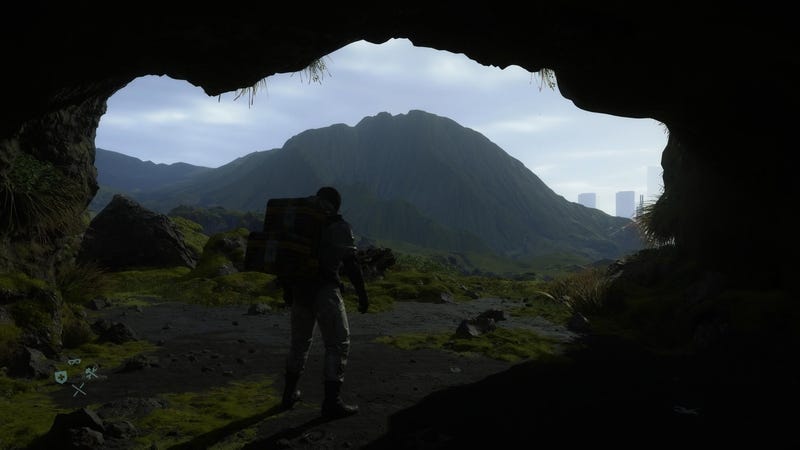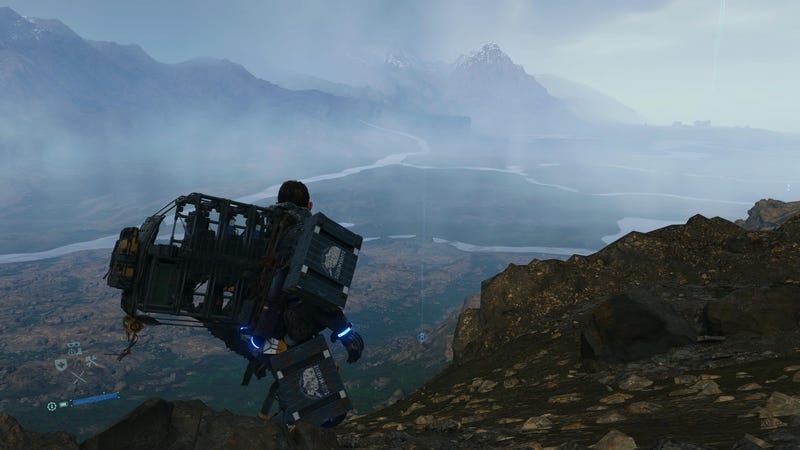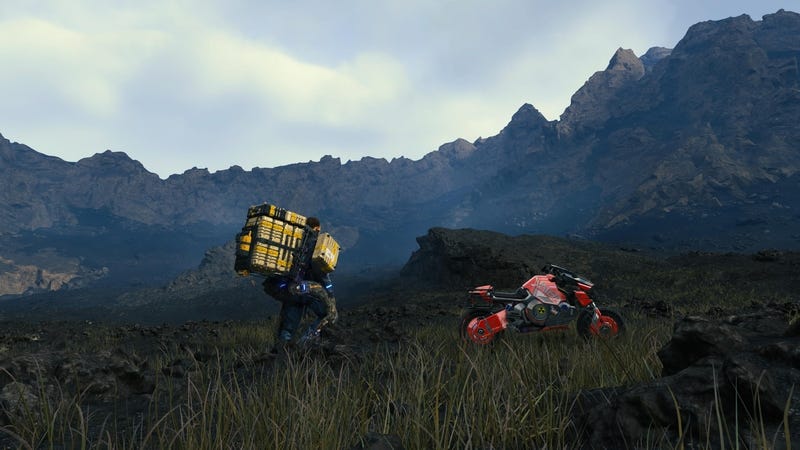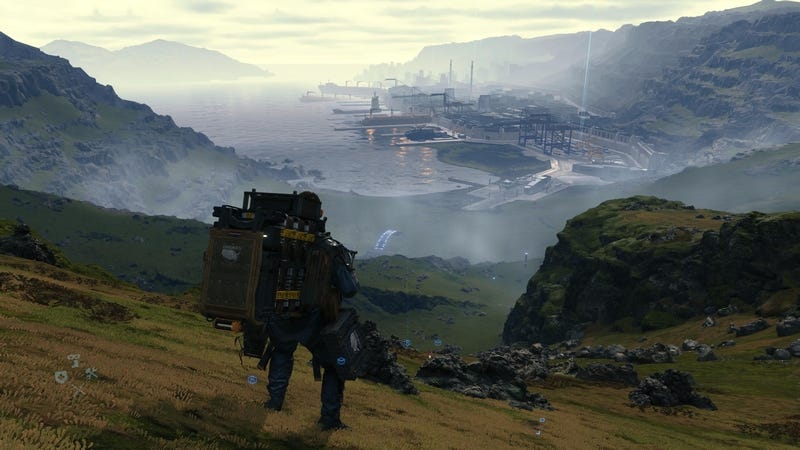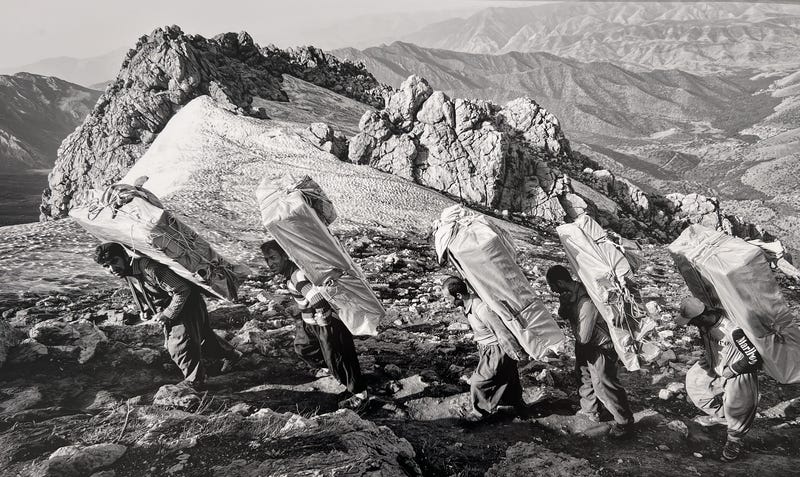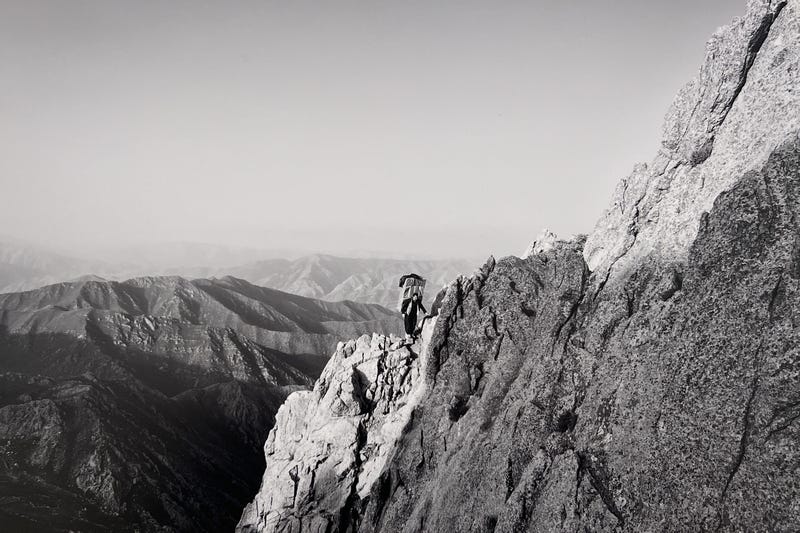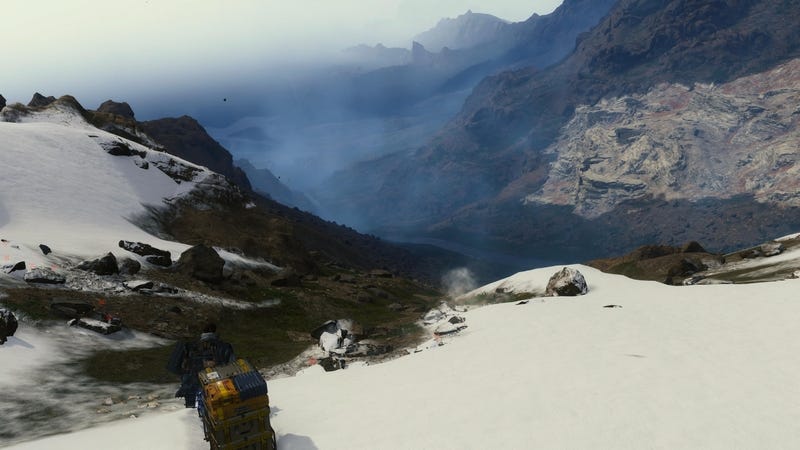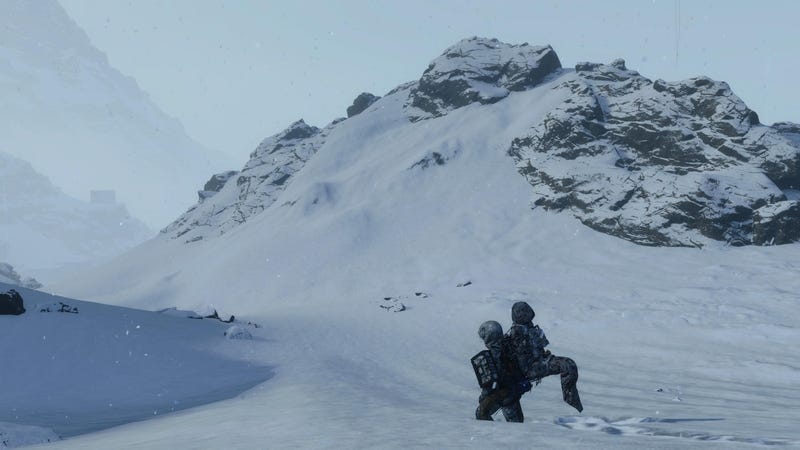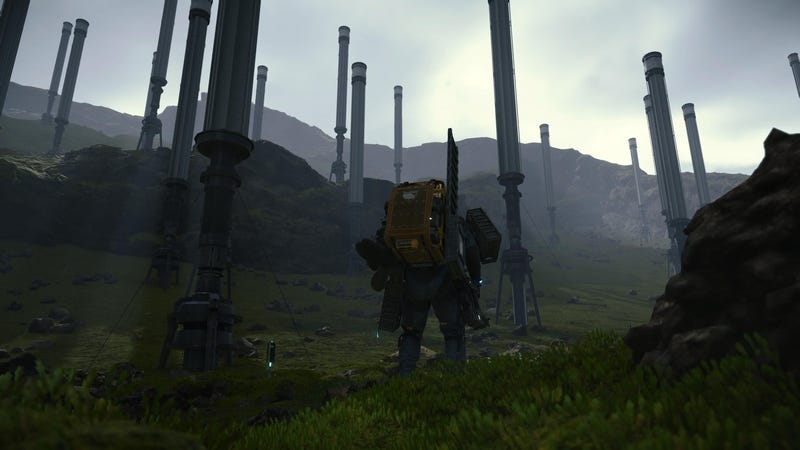One Bit of Death Stranding: The Tradition of the Porter
Sam Porter Bridges, sherpas, kolbars, and silleros. #tradition #labor #videogame
Welcome back to Artcade, the mountain trail that leads to breathtaking views. Today we’re dusting off a column I’d almost forgotten: One Bit Of. It premiered with Zelda, returns today with Death Stranding, and who knows: plenty of games deserve repeat performances on this stage. Off the top of my head, the recent Clair Obscur: Expedition 33 comes to mind. We’ll see. For now, let’s scramble up the slope of one of Kojima’s masterpieces. Enjoy the read!
Death Stranding is so dense it sparked all sorts of debates at launch. One I kept seeing: is it a DHL Simulator or a Internet Installer Simulator? The answer—like most online arguments— doesn’t really matter.
Today we won’t tackle the plot (we’d need ten Artcade episodes for that). All you need to know is: after a vaguely explained cataclysm, humanity hides in scattered bunkers across what used to be the United States while some moody ghost-like beings roam the land. In this setup, couriers become vital links between communities. And naturally, we play Sam Porter Bridges, the coolest courier of them all. Ridiculous summary? That’s how you know it’s accurate.
At first glance, Sam’s gear screams hyper-tech. Sure, he wields futuristic tools—leg-boosting exoskeletons, for starters. But portering is one of the human race’s oldest jobs (proof that the misery of moving day has plagued us since forever), and most of it still hinges on balancing cargo on your back. Not so different from what sherpas have always done.
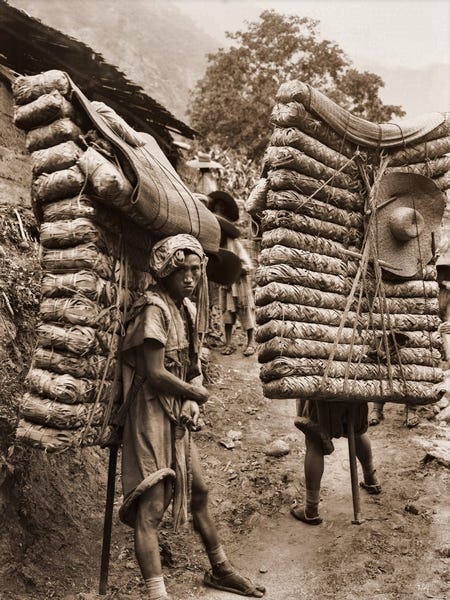
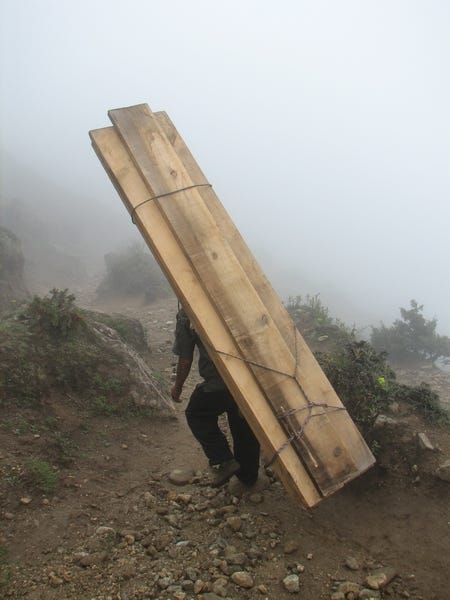
The Sherpa people live in the Himalayas, partly in India, partly in China. They’re such legendary mountain guides and carriers that “sherpa” has become a job title worldwide. They are the true backbone of many historic Everest and K2 expeditions. Centuries at altitude help.
Ask me, and Sam Porter Bridges can’t compete with sherpas. But Sam doesn’t want to be the best—he wants to be the coolest. Do sherpas ride motorbikes worthy of Akira? No? Thought so.
Most of the game still unfolds on foot through stunning scenery. With humans gone, nature (clearly inspired by Iceland’s landscapes) rules. So much so that spotting a city after a long trek feels genuinely moving. Each time a mission ends you feel a surge of relief—maybe like the kolbars at the finish line of their perilous journeys. But then, who are the kolbars?
Kolbar is a Kurdish word meaning “one who carries a load.” They cross the borders of Iran, Turkey, Syria, and Iraq and are mostly Kurds forced into the trade by lack of jobs. They often carry goods banned under international sanctions, specifically in Iran, or items that are simply too expensive to import through legal means. Many are killed by border patrols. (For more, there’s a short film linked here.)
The Andes have their own back-breaking tradition. Meet the silleros in Colombia—still honored as cultural icons. Modern silleros carry only goods, but in the 1800s, at a time when colonialism was in full force, they carried people over mountain passes.
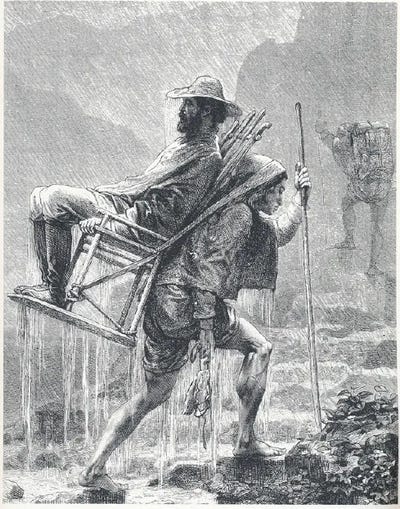
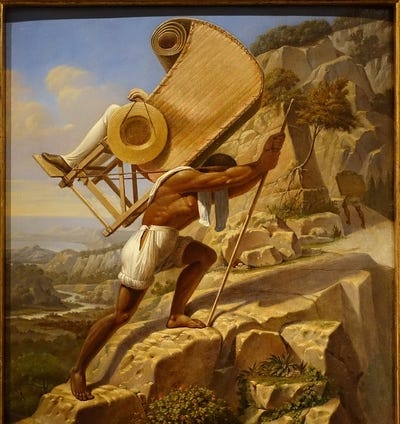
Left: a 1879 engraving by Maillard (based on a sketch by Manouel Andre). The title speaks for itself: The Ascent of Agony.
Right: 1833 oil painting by Johann Friedrich Waldeck, Princeton University Art Museum—brace for the title: The Artist Carried in a Sillero over the Chiapas from Palenque to Ocosingo, Mexico.
Two takeaways: first, the artist apparently thought the sillero was the chair, not the carrier—or he simply treated the person as transport, like saying “by carriage.” Second, the route is in the title. Google Maps says Palenque to Ocosingo is 118 km: 28 hours on foot.
Sam Porter Bridges, of course, carries people too. Don’t worry, no colonials involved. Promise.
Kojima Productions (2021) [2019] Death Stranding (Director's Cut) [Video game] [Action-adventure] [38 Hours] (Playstation 5) [PlayStation 4, Windows, iOS, macOS, Luna, Xbox Series X/S] Sony Interactive Entertainment
Information Desk
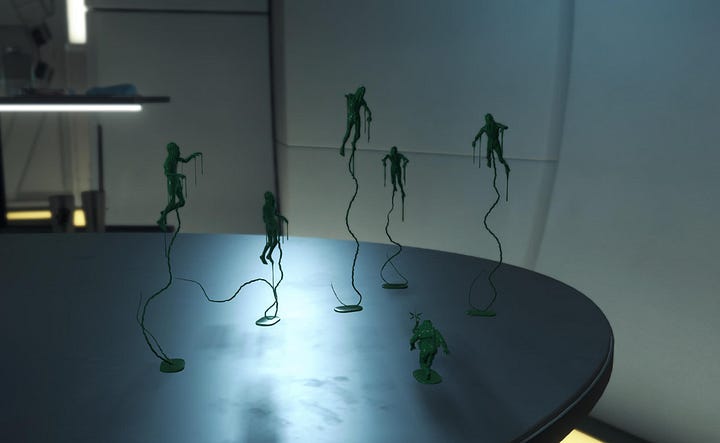
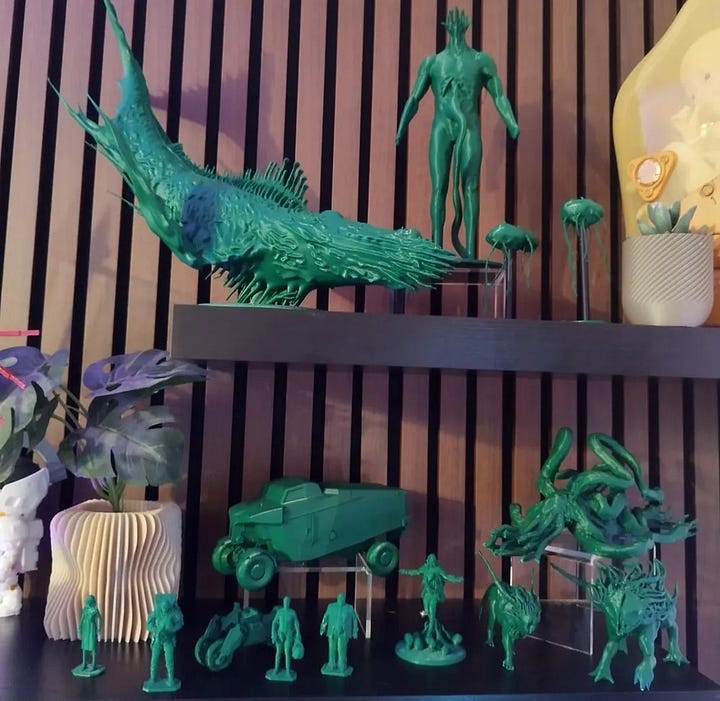
If you’ve played Death Stranding, you know toy soldiers pile up in Sam’s room as you progress (left image). What you might not know: someone gathered every model online and 3-D-printed them (right image).
Death Stranding 2 launches June 26, 2025. Need I say more? Play the first game (at the moment, it’s part of the PlayStation Plus Extra and Premium game libraries) or warm up with a ten-minute trailer featuring, among others, Luca Marinelli and Norman Reedus.
There’s also a French graphic novel about the kolbars that looks fascinating. I say “looks” because it’s only in French, and I don’t speak French. If you can translate—and maybe republish in English—please do. Or, if you read French, pick up Les oiseaux de papier and tell me how it is.
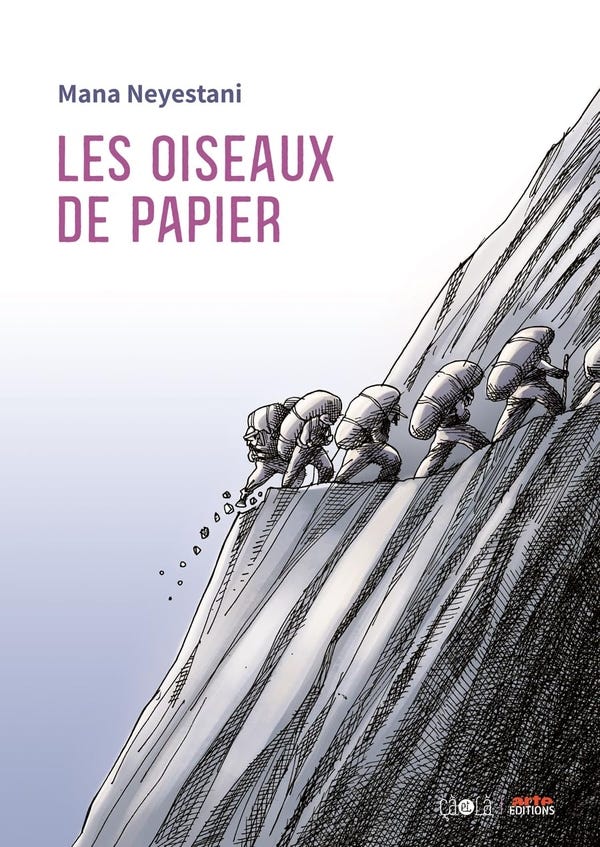
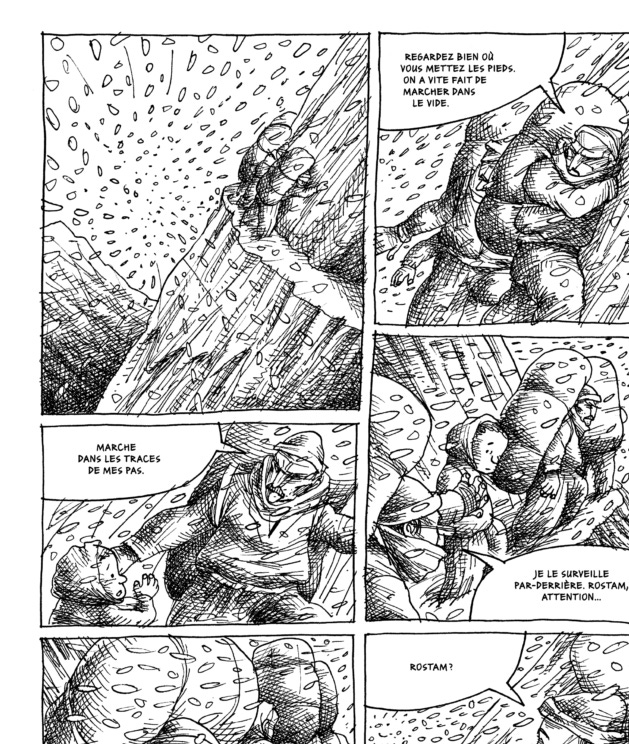
My last two coins
Death Stranding hits you with an avalanche of ideas. Strip it down and it’s a meticulous trekking sim: weight distribution, fatigue, even the need to pee—those kinds of details. But the avalanche of concepts dwarfs the gameplay (in the sequel, yes, an actual avalanche shows up).
Before settling on today’s angle—back to basics—I was buried in possibilities. A quick list, just to show how much fits inside Death Stranding, and to bookmark future One Bit Of topics I’ll be writing for the next fifty years: asynchronous multiplayer and the power of the like; blood as energy and as weapon; everything about babies; the beach; whales; red and black and gold; silence versus music; mourning from the dead’s point of view; connection; the umbilical cord; the cross. And that’s only what popped into my head while typing. How much can a single game hold?
Until the next episode, ciao!



